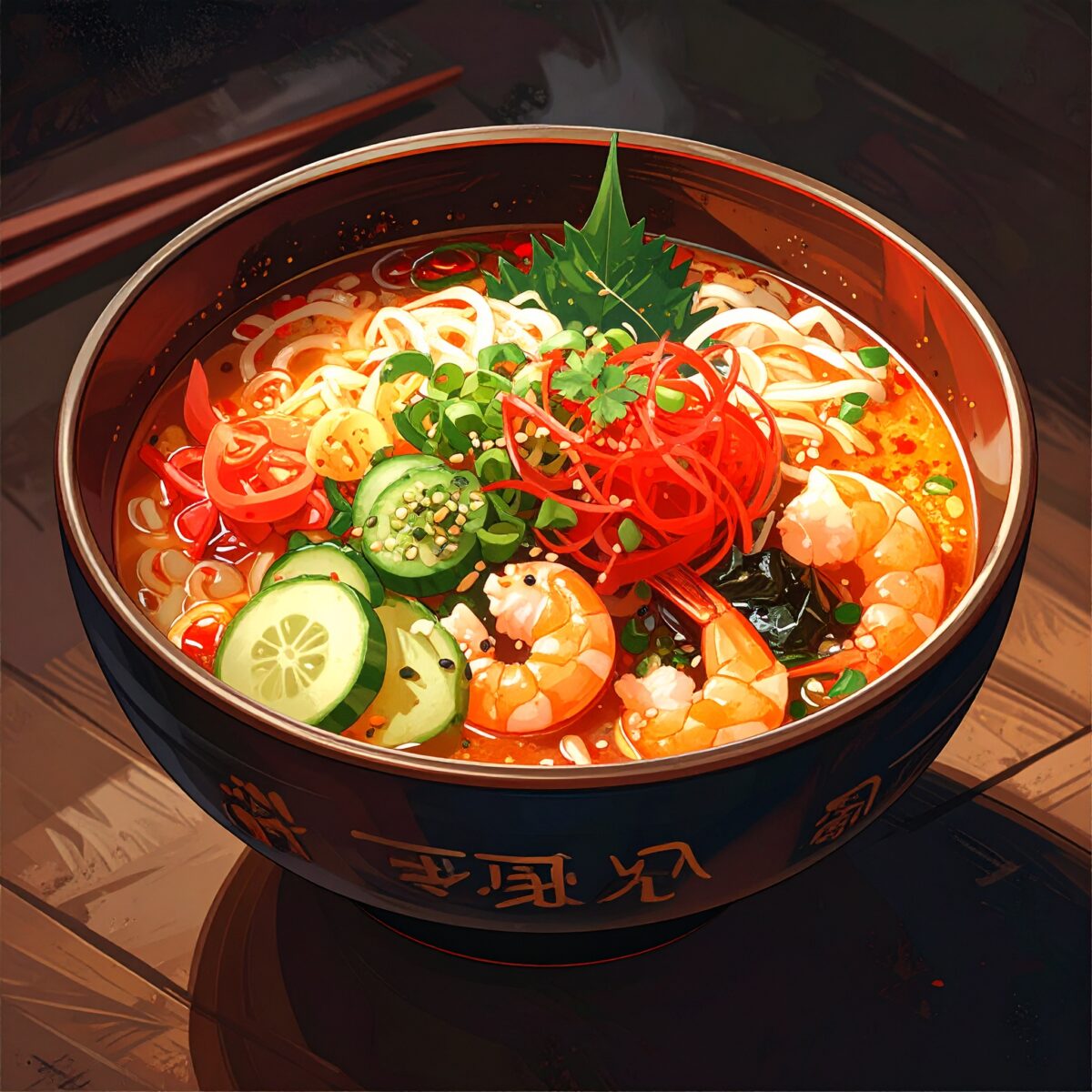In the Edo period, Japanese people lived without refrigerators or convenience stores. Yet they prepared meals with remarkable care—cooking with seasonal ingredients, wasting nothing, and creating nourishment from simplicity. Today, this humble and inventive Edo gohan is gaining international recognition among chefs in France, Scandinavia, and beyond as a model of sustainable food culture.
Rather than meat-heavy meals, Edo-era cuisine centered on vegetables, beans, and fish. Fermentation and dried foods were used to extend shelf life, and every part of an ingredient—from root to skin—was put to use. These traditional practices align closely with today’s global efforts to reduce food waste and embrace locally sourced, environmentally conscious cooking.
Learning from Ichiju-Issai: Maximum Satisfaction from Minimal Means
The foundational meal of Edo-period Japan was ichiju-issai—“one soup, one dish”—typically consisting of steamed rice, miso soup, and a single side dish. This minimalist approach to dining is now resonating deeply with people in the West who are seeking simpler, more mindful ways of eating.
At a culinary school in Sweden, ichiju-issai is taught as a model of nutritional balance and aesthetic harmony. An increasing number of young chefs are focusing not on volume, but on quality—and on techniques that bring out the natural flavor of each ingredient.
Fermented foods, too—like miso, nukazuke pickles, and dried fish—are being rediscovered globally. Not only are they naturally preserved, but they are also valued for their gut-friendly, functional benefits. In a world returning to roots, Edo’s kitchen wisdom is finding a new and appreciative audience.
The Edo Kitchen: A Zero-Waste Philosophy Centuries Ahead of Its Time
In Edo-period Japan, nothing in the kitchen was wasted. Daikon leaves became rice toppings, soup stock scraps were transformed into sweet-savory tsukudani, fish bones were simmered into broth, and leftover rice bran was repurposed for cleaning or pickling. Discarding food was simply not part of the mindset.
This ethos of “using every part” is now resonating with Europe’s growing zero-waste movement. In Paris, for instance, vegan menus inspired by the Edo-era cookbook Tofu Hyakuchin are being introduced as models of “sustainable cooking, Edo-style.”
Traditional Edo kitchen tools—such as bamboo baskets, earthenware pots (donabe), and wooden cutting boards—are also being praised for their natural, plastic-free design. Many of these are now being sold in organic and lifestyle shops across Europe as elegant, eco-conscious alternatives.

Wisdom in Eating Local and Seasonal: Edo’s Deep Connection to Place
At the heart of Edo-era cuisine lies the concept of shindofuji—the belief that human health is best maintained by eating food grown in the same land where one lives. It reflects a deep understanding of harmony between body and environment.
In a time when long-distance transport was limited, ingredients came from nearby fields and coastal waters. Meals were shaped around what was in season, consumed without waste. This simple, intuitive practice of local consumption mirrors today’s growing movement for locally sourced food.
As one German chef remarked:
“People in Edo found ways to live entirely off what their land provided. Their relationship with food—and with nature—was far more direct than ours today.”
Not Luxury, but Mindful Satisfaction: The Edo Aesthetic of Eating Well
In Edo-period Japan, meals weren’t measured by extravagance, but by care. Rinsing rice, drawing water, making stock from scratch, and cooking in harmony with the seasons—these daily rituals were a quiet form of life’s aesthetics, nourishing the spirit even before the first bite.
This value system aligns closely with global movements now gaining momentum: slow food, mindful eating, and education through food. The simplicity of Edo meals didn’t limit satisfaction—it deepened it. And in that simplicity, creativity blossomed. It is this Edo sensibility—humble, attentive, and full of intention—that may help guide the future of how we eat.
Conclusion: The Edo Kitchen as a Guide for the Future
In an age of advanced technology and effortless access to ingredients, Edo-style cooking gently asks us to pause and reflect: “what do we truly need?” And more importantly, “Can we use it with care, and with gratitude?”
This mindset—using only what is necessary, with intention and respect—offers wisdom that extends far beyond food. It invites us to reconsider how we live, not just how we eat. Perhaps the future of sustainable cuisine lies quietly in the kitchens of the past.




